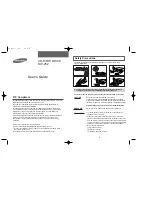
15
www
.wittur
.com
Changes can be made without notice
PM.2.004922.EN - 810-000-000 SRS DC-PWM
©
· Edition 22 July 2020
6
FUNCTIONS
6.1 REVERSING SYSTEM FORCE
The reverse motion torque parameter sets the sensitivity degree to detect an obstacle during the door closure, thus giving the reopening
command. The parameter's value can be manually set with a regulation trimmer [IM] or by means of the handset from a minimum force
(high sensitivity) to a maximum force (low sensitivity).
Please note that a minor sensitivity corresponds to higher values and vice versa.
The reversing system is INTERNAL, the reopening of the doors due to obstacle detection is solely controlled by the Door Controller and
door reopening is signalled to the main lift controller through the IM contacts (1-4 contacts normally closed, 2-4 contacts normally open).
6.2 FORCED CLOSING (NUDGING)
In the case of photocell failure, after several failed attempts at closure, it is possible to command the closure of the doors in low speed
(forced closing) by closing the 15-22 connector pins using a relay (voltage free contact).
6.3 MOTOR ROTATION DURING CLOSING
This function fixes the motor rotation during the closure command.
The default value gives the motor a clockwise rotation while closing; to set an anticlockwise rotation to the motor during closure,
simultaneously press for 5 seconds the buttons [CLS] [OPN] [SELF-LRN] on the electronic board or alternatively select the option shown
on the handset display.
The controller resets and the motor rotation is inverted.
Just follow the same instructions to reset the motor in the clockwise rotation.
6.4 SKATE TYPE (INSTRUCTION WITH HANDSET)
This function allows the user to set the skate type:
•
Standard (STD) skate (Default): the speed profile setting are optimized for the Sematic standard ALU skate type.
•
Expansion (EXP and EXP-B) skate: the speed profile setting are optimized for the Sematic 2000 US Expansion skate type.
00
-
STD Skate (Aluminium skate)
01
-
EXP Skate
Use this setting when you have a single hole in the upper
fixing plate (left picture) or you have two holes and you are
connecting the belt to the lower one (right picture)














































